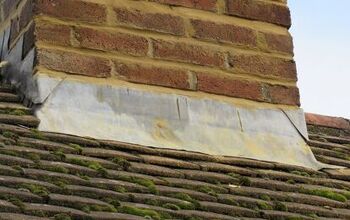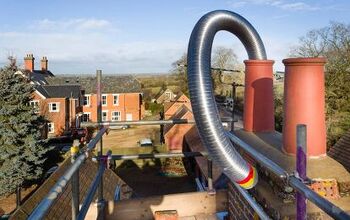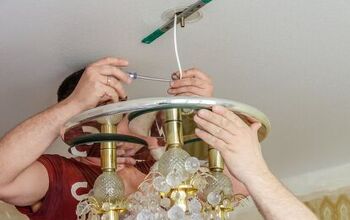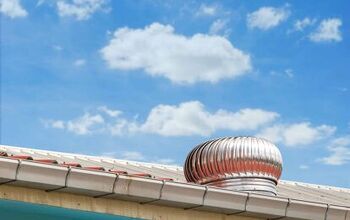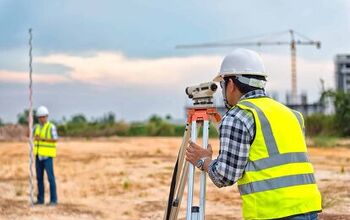2022 Chimney Sweep Cost | Compare Average Rates

Chimneys are an essential component of your fireplace that allows for toxic exhaust to exit your home. However, as these harmful fumes travel up and out, they leave behind soot and tar that eventually turns into creosote on the walls of your chimney. Creosote is an incredibly flammable substance and if your chimney isn’t cleaned regularly, it can ignite and damage your home.
It is recommended by the National Fire Protection Association for fireplaces, vents, and chimneys to be inspected and cleaned on (at least) an annual basis.
Although using wood-burning fireplaces offer a cozy appeal and can lower your electric bills in the winter, the carbon residue and ash that it leaves behind in your chimney needs to be removed periodically. You should have your chimney cleaned at least once a year to prevent carbon monoxide leaks, chimney fires, and a lack of airflow to the outdoors.
The average chimney sweep cost is $200, and chimney inspection costs another $150, on average. It costs an average of $337 to remove an animal from the chimney, and at least another $80 to clean it. You can expect to pay at least $225 to clean a wood stove chimney and another $350 for chimney flashing to prevent future damage.
Continue reading for our comprehensive guide on how much a chimney sweep costs, so you can budget accordingly when the time comes for your next chimney cleaning.
Do You Need Chimney or Fireplace Cleaning or Inspection?
Get free, zero-commitment quotes from pro contractors near you.

Overview of Cost to Sweep a Chimney
A chimney cleaning usually runs homeowners between $100 and $300, on average. Although, costs could be as low as $80 or as high as $500, depending on the size, type, and conditions of your chimney. During the cleaning, a professional will use a wire brush that is suited to the specific size of your chimney in order to scrub the residue off of the interior walls.
This brush is connected to flexible rods that can be combined to lengthen deeper into the flue. Depending on the chimney sweep, they may approach it top-down from the roof or bottom-up from the fireplace.
Although, there is another less common method that involves weights and ropes instead of rods working from the top. Regardless, working from the top is often the most preferred method as it results in less of a mess. The fireplace is usually closed off so that the soot and residue that enters the home and air is diminished. Included in the service, tarps will be positioned at the base of the fireplace so that clean-up is minimized.
Most companies offer the inspection and cleaning as a package. They may charge the cleaning as a flat rate of $100 to $300 for both the chimney cleaning and inspection or as an hourly rate of $75 an hour. If you decide on the hourly rate, you can expect both the inspection and cleaning to take around 30 minutes to an hour for those that require Level 1 and Level 2 inspections.
Level 3 inspections, on the other hand, can take more than a day depending on the extent of the work needed to sweep the particular chimney.
| Average Cost | $200 |
| Average Range | $100 to $300 |
| Low-End Cost | $80 |
| High-End Cost | $500 |
What Does a Chimney Sweep Include?
A chimney sweeping usually includes both an inspection and a cleaning. The level of the inspection required will depend on how long it has been since your last cleaning and whether or not there are any structural concerns. The most basic service typically involves a Level 1 inspection. If you’re unsure if your chimney is due for a sweeping, here are some things to keep a lookout for:
- Soot and creosote build-up: You don’t need a professional to check if there’s build-up in your chimney. Before you check, make sure that there isn’t a draft coming down the chimney. If there is, you can reverse the draft by opening a door or window. Then, make sure you have on the proper safety goggles and dust mask for safety. Use a bright flashlight to shine up into the flue and scrape into the soot. If the soot measures more than 1/8’ thickness, the chimney needs to be cleaned.
- Odor: A good indication that you have creosote build-up in your fireplace is a rich, tar odor coming from the fireplace.
- Smoke escaping into the room: When you burn your fireplace, if you have smoke entering your living space this is a sign that you have a substantial blockage in your flue.
- Faint fire: If your fire is faint or weaker than it used to be, you likely need to have the chimney cleaned. This should be taken care of as soon as possible since insufficient wood burning will lead to creosote deposits quicker.
All of the above issues can be prevented by having your chimney cleaned regularly. Creosote buildup should be taken seriously, as it is a serious hazard that can lead to chimney fires and significant damage to your property.
Chimney Inspection and Cleaning Costs
Generally speaking, the cost of a chimney sweep and inspection largely depends on the level of inspection required for your chimney. Oftentimes, the inspection is free with your cleaning or it can be up to $5,000 depending on the level needed. Regardless, an inspection is necessary to ensure that your chimney is safe enough to clean and use.
The National Fire Protection Association categorizes chimney inspection into three distinct levels, depending on the invasiveness of the process. Each level has a different cost, and each includes the cost of the cleaning as well. Oftentimes, a Level inspection is “rolled into” the total cost of the cleaning service.
The additional levels, on the other hand, get progressively more detailed. Level 2 is usually necessary if you planned to do work on the chimney, while Level 3 is done when there is known structural damage.
The table below outlines the three levels of chimney inspection, along with their average cost ranges.
| Inspection Level | Cost Range (Cleaning Included) |
| Level 1 | $85 to $950 |
| Level 2 | $150 to $1,000 |
| Level 3 | $500 to $5,000 |
Level 1 Chimney Inspection
In most cases, a level one inspection is considered “free” as a part of the chimney cleaning. Paying for the inspection separately could range from $80 to $200. However, the cost of a level-one chimney inspection with cleaning included is between $85 and $950. This level of inspection is reserved for chimneys that are cleaned regularly and are functioning as expected.
During a level one inspection, the professional will look at the condition of the exterior as well as all the components of the fireplace. They will inspect as much of the interior as possible using a flashlight, looking out for possible obstructions and blockages inside. While inspecting, the professional may dome across damage to the chimney’s exterior brickwork.
In this case, the individual bricks may need to be replaced or the mortar repaired. However, these are additional chimney services that will not be included in the cost of the cleaning and inspection.
Level 2 Chimney Inspection
Level 2 chimney inspections range in cost from $150 to $1,000, with cleaning included. This level of inspection is necessary when work is going to be performed on the chimney that could compromise its function or overall stability. The inspection is more advanced, involving sending a camera into the flue for a thorough check of the surrounding structures and more detailed assessment.
A level two inspection is also usually required before relining the flue or retrofitting it for a different form of heating component. It’s also recommended to get this level of inspection before selling your home or after an accident has occurred involving your chimney.
Level 3 Chimney Inspection
As the highest level of inspection, a level three chimney inspection is required when structural damage to the chimney is almost certain. In this case, portions of the chimney may need to be deconstructed in order for the professional to reach and assess the damage. Due to the extensive work required, you can expect to spend between $500 and $5,000, with cleaning included.
Chimney Cleaning Cost by Type of Fireplace
Chimney sweeping is highly recommended to both maximize its efficiency and identify possible issues, such as holes, cracks and buildup, that could lead to more serious problems. Each type of fireplace has a different chimney associated with it. Chimneys are made from various materials and elements and, oftentimes, require a specialized, professional cleaning that comes at a specific cost. With that said, the table below outlines the cost to clean a chimney based on the type of fireplace:
| Chimney Type | Total Cost (Labor) |
| Gas Fireplace | $80 to $130 |
| Pellet Stove | $130 to $200 |
| Wood Stove | $150 to $300 |
| Wood Burning | $160 to $240 |
Gas Fireplace Chimney Cleaning Costs
Gas fireplaces are among the most affordable heating appliances available for homeowners. Not only are they energy-efficient, but these fireplaces are also easy to install and cost less to operate than alternative appliances. With these factors in mind, it makes sense that gas fireplaces are one of the most affordable options for homeowners on a budget. Not to mention, they are also easy to light and produce no odor, which creates the most ideal, homey atmosphere.
Although a chimney isn’t always required for a gas fireplace, installing one can minimize the risk of carbon monoxide problems and also enhance the look. When compared to wood-burning fireplaces and wood or pellet stoves, gas fireplace chimneys require less maintenance.
Since there aren’t any logs to clean up or soot that is produced, most professionals advise having these cleaned every year or every other year. The cost to clean a gas fireplace chimney is between $80 and $130.
Pellet Stove Chimney Cleaning Costs
Pellet stoves are an eco-friendly way to heat your home during the winter months. It also offers the convenience of automatic ignition. However, burning the pellets results in the collection of residues inside of the stove box. To ensure the longevity of the pellet stove, it should be cleaned weekly. Not all professionals will provide pellet stove cleaning services and chimney cleaning services at the same time.
Instead, you’ll have to hire a chimney professional and handle the cleaning jobs separately. With that said, the cost to have your pellet stove chimney cleaned ranges from $130 to $200 on average.
Wood Stove Chimney Cleaning Costs
Since burning wood creates creosote, wood stoves must be cleaned on a regular, annual basis. Smoke from burning the wood leaves behind creosote, which sticks to the chimney flue and can catch fire if not cleaned appropriately. Cleaning the wood stove’s chimney regularly will prevent potential issues from occurring, while also helping to clear out debris and residue that may block the exit path for toxic exhaust fumes. The average cost to clean a wood stove’s chimney is between $150 and $300 on average.
Wood Burning Fireplace Chimney Cleaning Costs
Although wood burning fireplaces are some of the most sought-after heating appliances, they tend to require the most maintenance. Burning wood leaves a residue that can form creosote. Regular maintenance will ensure that the creosote doesn’t have the potential to catch fire and result in any further damage to the surrounding structures.
If the wood burning fireplace is used frequently, it should be cleaned quarterly. If not, they can be cleaned on an annual basis. The average cost to clean a wood burning fireplace chimney is between $160 and $240.
How Each Part of a Chimney is Cleaned
Chimneys are made of very distinct parts and components and the number of parts will vary based on the complexity of the chimney. However, there are several components that are common in almost all types of chimneys, including the firebox, the flue, the chimney liner, and a damper.
Each of these components is made of different materials, requiring individual cleaning tools and methods to ensure that they are properly protected and preserved during the cleaning process. With that said, we’ve outlined a brief explanation below of how each part of a chimney is cleaned during a traditional chimney sweep.
Firebox Cleaning
As the name indicates, the firebox is where the wood is burned and is usually inserted into the stove or fireplace to burn material instead of burning the fireplace itself. To clean a firebox, a professional uses a flexible “noodle brush” for cleaning the smoke shelf and then a long-handled brush to clean the soot off of the sides of the firebox.
Your chimney sweep will cover nearby surfaces in order to prevent soot from getting on them during the cleaning process. Chemicals may also be implemented depending on the extent of the work needed to appropriately clean the firebox.
Chimney Flue Cleaning
The flue is usually made out of ceramic, clay, or metal conduit. Its purpose is to contain the combustion products and direct them out of the chimney. There is a cap on top that prevents water and animals from getting inside. Chimneys may have no flue, one flue, or multiple flues. Before cleaning the flue, it’s important that contractors know the height in order to determine the length of the brushes required.
A chimney flue can be cleaned from the top or the bottom. In most cases, the chimney sweep will clean the flue using a brush and an up and down motion to remove the soot collected inside.
Chimney Liner Cleaning
Chimney liners are designed to produce the chimney’s masonry from the byproducts of burning wood, which could corrode the masonry and lead to house fires. Most often made out of stainless steel, the liner has the ability to tolerate high heat levels and ensure that both fire and heat remain inside the chimney and the fireplace. Chimney liners are typically cleaned using specialized polypropylene bristle brushes that remove debris and soot without damaging the liner itself.
Chimney Damper Cleaning
The chimney damper is a metal component that moves to allow or prevent smoke from exiting the fireplace and entering the flue. Since most dampers are installed roughly a foot above the opening of the fireplace, they need to be unpinned or unhinged from their position to be cleaned.
However, depending on the damper and where it’s located, it may not be movable. To clean a chimney damper, a chimney sweep will use a wire brush to remove the soot. Then, they will clean any leftover soot using a specialized cleaning mixture.
Fireplace Cleaning
Unlike the firebox being a box inserted into the fireplace, the fireplace itself refers to the entire interior structure where the fire is burned. Fireplaces can be made from a variety of materials and like the firebox cleaning procedure, the chimney professional will use a hard-haired brush to clean the interior of the fireplace. If the bricks inside are damaged or darkened from fire, your professional may use chemicals to bring them back to their original state.
Chimney Cleaning Cost Factors
The cost of a chimney sweep depends on a number of factors, with the primary ones being the roof’s accessibility, how often you use your fireplace, and how much time has passed since the last cleaning. As a general rule of thumb, if the fireplace gets used more than four times a week, you’ll need to clean the chimney more often in order to prevent buildup.
Additionally, if your roof is steeper, your chimney sweep will have more difficulty climbing onto it. As such, the extra labor involved will increase the overall cost to have the chimney cleaned. Finally, if your chimney hasn’t been maintained in a while, it may require multiple sessions which will incur an additional charge.
Although the costs to clean the chimneys on fireplaces and wood stoves are on par, you may pay more to have a wood stove cleaned since the flue is usually difficult to access and has an odd shape.
Additional Chimney Services
During inspection or cleaning, your chimney sweep may find additional issues with the chimney that needs to be addressed and will add to the overall chimney sweep cost. They may discover ways to enhance the chimney that maximizes efficiency a minimizes the creosote buildup.
While some of these additional services may be affordable and easy to do, others could involve multiple days of labor and cost several thousand dollars. With that said, here are some additional chimney services that may arise as a result of a chimney cleaning:
Chimney Caps
Your professional may recommend a chimney cap if you are having problems with downdrafts. Chimney caps are designed to keep water, animals, and debris out of the chimney. Damaged or compromised chimney caps should be replaced to optimize the efficiency of the fireplace. It costs between $150 and $700 on average to have a chimney cap installed.
Flue/ Chimney Liners
Depending on the condition of the liner, your chimney sweep may advise having it relined. Repairs and replacements to the flue liner will help make the fireplace safer. Or, if your chimney doesn’t have a flue liner, it will be recommended to have one installed.
Flue, or chimney, liners are designed to protect the masonry and mortar, increasing the lifespan of your chimney. They also help retain heat, provide sufficient ventilation, and prevent house fires. The cost to install a chimney liner is between $1,600 to $5,000.
Chimney Flashing
If you don’t have flashing installed where your roof meets the chimney or your existing flashing is damaged, you’ll want to have this issue corrected immediately. It costs approximately $200 to $500 to install flashing, which will help prevent leaks and water damage to your chimney. Of course, you can lower installation costs by handling it yourself. However, much like most other roofing work, it is highly recommended to have a professional properly install your roof flashing.
Fireplace Damper
Dampers are important to direct smoke up and out of the chimney, in addition to preventing downdrafts. If your fireplace damper is damaged or warped, it should be replaced. A warped damper can pull your indoor air outside, which decreases your home’s efficiency. On the other hand, a damaged damper can also push smoke into your living space. Generally speaking, it costs $200 to $300 to have a fireplace damper installed and between $200 and $225 to have one repaired.
Creosote Logs
Creosote sweeping logs are a beneficial tool that helps to loosen up the residue inside of your chimney flue. Through a chemical process, they transform thick, tar-like creosote into a more manageable, flaky substance. As a result, the ash-like creosote falls into the fireplace and makes it much easier to clean up.
These can be used throughout the year to keep your chimney in good shape, but they should never be used to supplement for a professional chimney sweep. Creosote sweeping logs cost between $10 and $20 a log.
Animal Removal
In some cases, rodents, birds, and small animals can get trapped or make a nest inside of your chimney. It’s not uncommon for chimney sweeps to come across these animals during cleaning. Without proper removal, these pests can block the normal flow of exhaust gases. The cost to have animals removed professionally and humanely will vary depending on the species, but typically averages between $175 and $500. Bats, for instance, will usually cost more to remove safely than squirrels.
Do You Need Chimney or Fireplace Cleaning or Inspection?
Get free, zero-commitment quotes from pro contractors near you.

Related Questions
Can I sweep my own chimney?
Although you can purchase DIY chimney sweeping tools and do the cleaning yourself, it is always recommended to hire a professional to ensure it’s done properly.
How often should my chimney be cleaned?
Chimneys should be cleaned at least once per year, preferably in the springtime and after the heating season is over. Or, if you live in an area where the heating season lasts longer, you may need to have your chimney cleaned twice a year. Depending on how often you use your chimney, it may need to be cleaned even more frequently.
Related Articles

Jessica considers herself a home improvement and design enthusiast. She grew up surrounded by constant home improvement projects and owes most of what she knows to helping her dad renovate her childhood home. Being a Los Angeles resident, Jessica spends a lot of her time looking for her next DIY project and sharing her love for home design.
More by Jessica Stone










